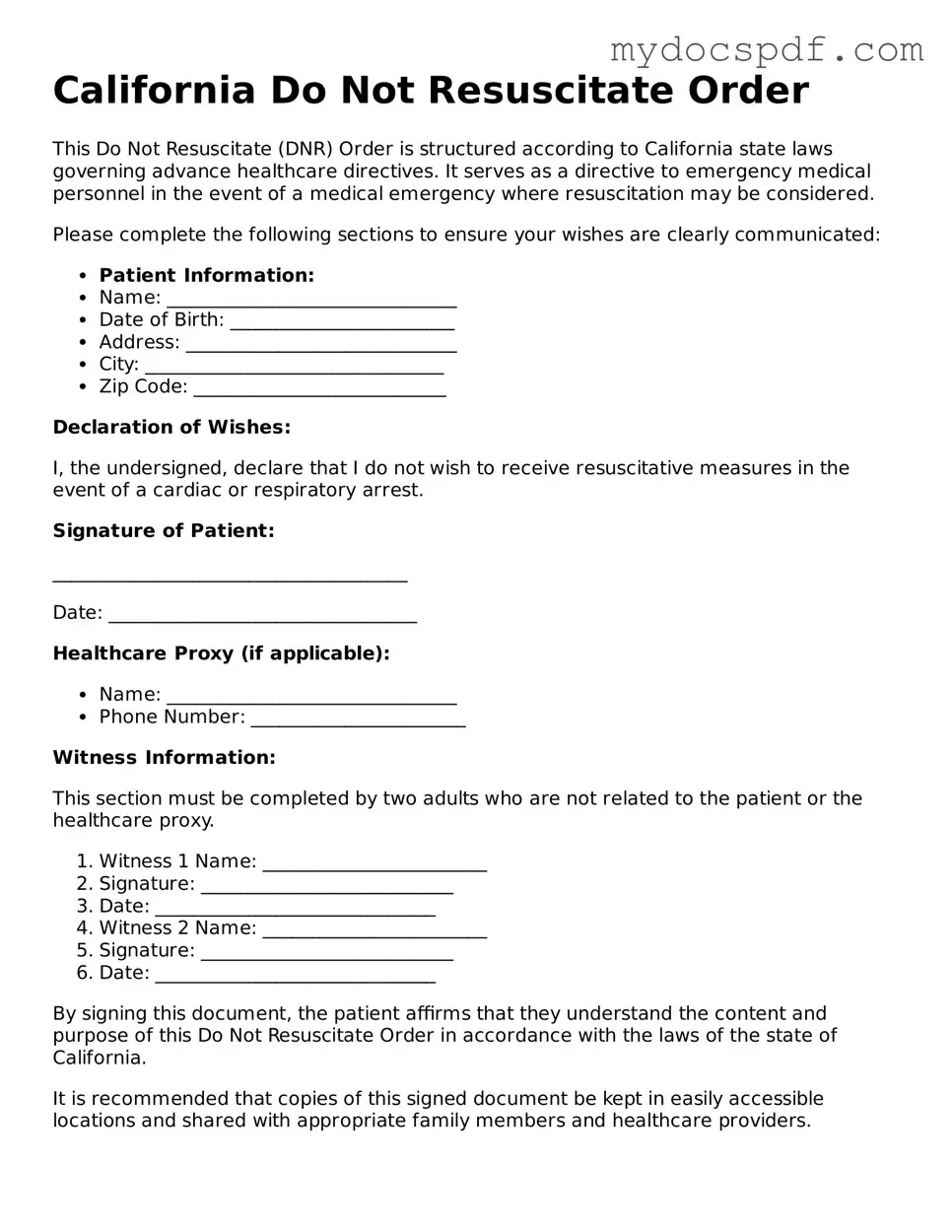California Do Not Resuscitate Order
This Do Not Resuscitate (DNR) Order is structured according to California state laws governing advance healthcare directives. It serves as a directive to emergency medical personnel in the event of a medical emergency where resuscitation may be considered.
Please complete the following sections to ensure your wishes are clearly communicated:
- Patient Information:
- Name: _______________________________
- Date of Birth: ________________________
- Address: _____________________________
- City: ________________________________
- Zip Code: ___________________________
Declaration of Wishes:
I, the undersigned, declare that I do not wish to receive resuscitative measures in the event of a cardiac or respiratory arrest.
Signature of Patient:
______________________________________
Date: _________________________________
Healthcare Proxy (if applicable):
- Name: _______________________________
- Phone Number: _______________________
Witness Information:
This section must be completed by two adults who are not related to the patient or the healthcare proxy.
- Witness 1 Name: ________________________
- Signature: ___________________________
- Date: ______________________________
- Witness 2 Name: ________________________
- Signature: ___________________________
- Date: ______________________________
By signing this document, the patient affirms that they understand the content and purpose of this Do Not Resuscitate Order in accordance with the laws of the state of California.
It is recommended that copies of this signed document be kept in easily accessible locations and shared with appropriate family members and healthcare providers.
